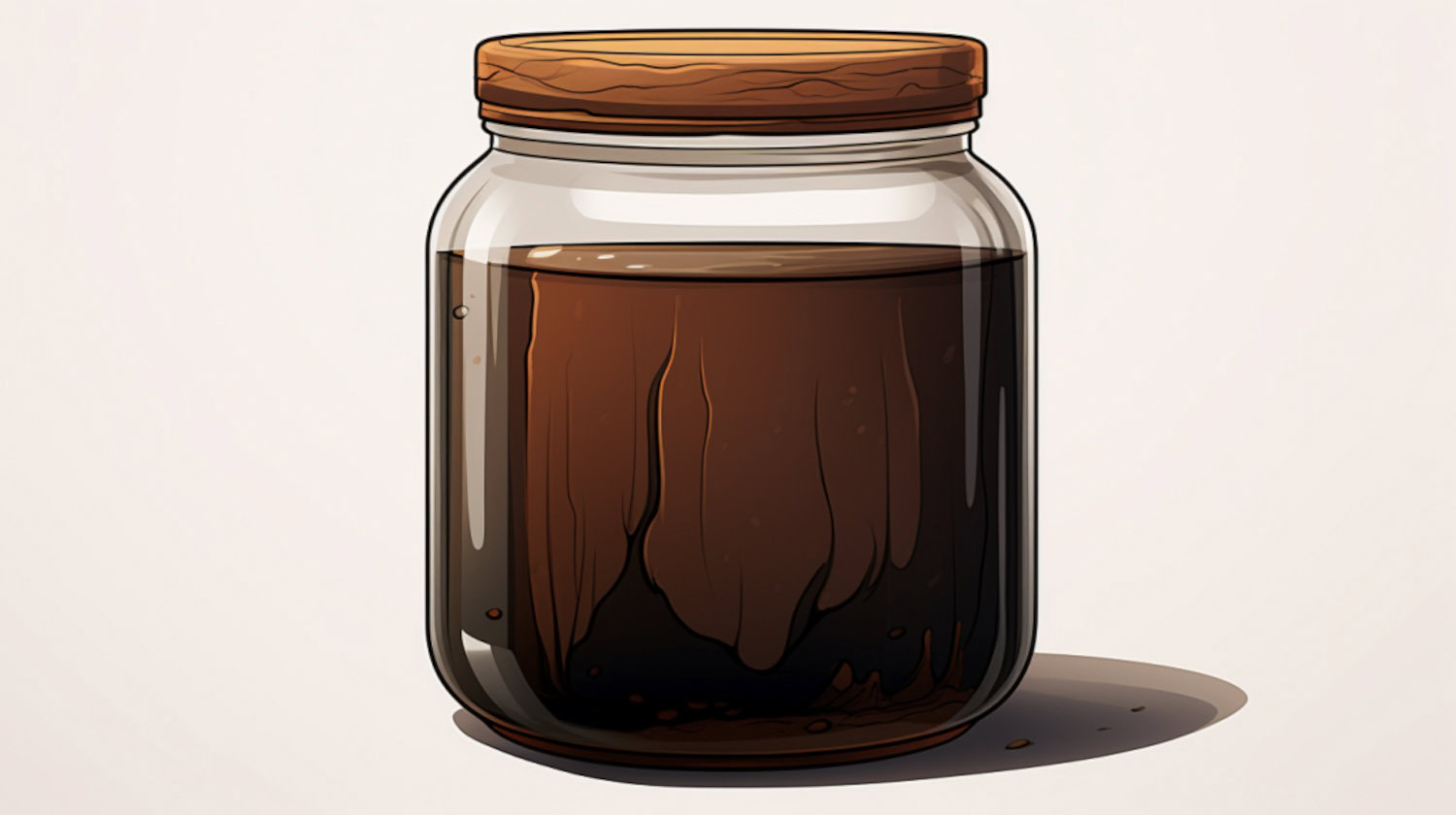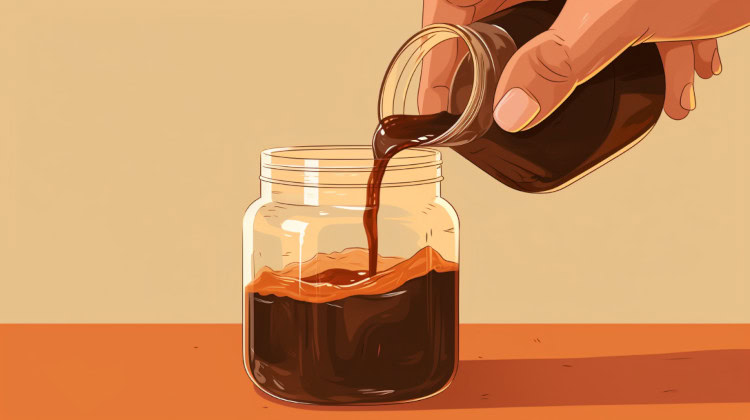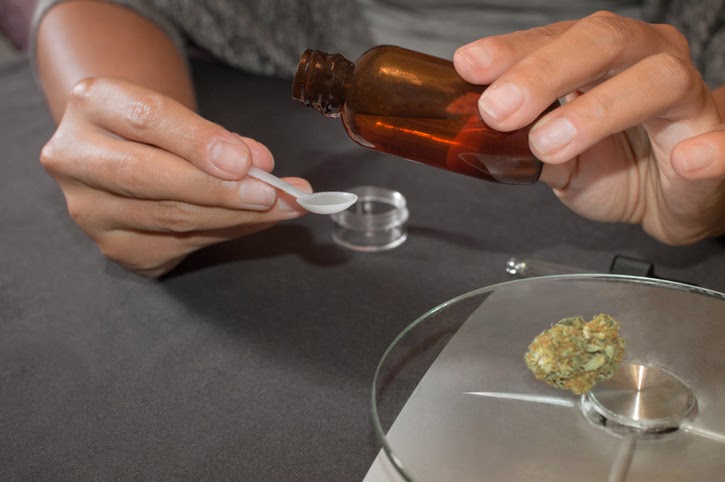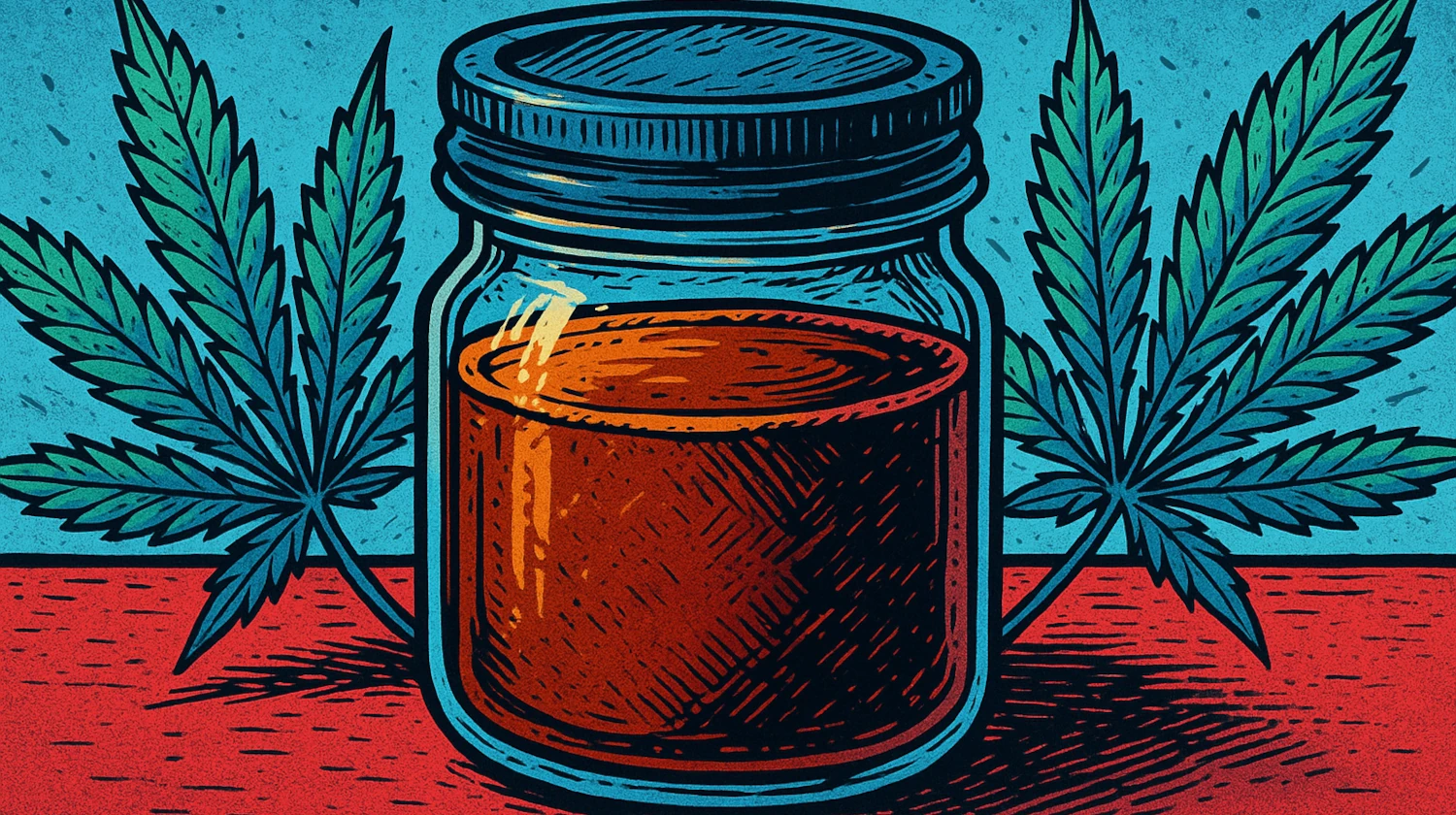
Rick Simpson Oil (RSO) is a full-spectrum cannabis extract made by Canadian cannabis activist Rick Simpson. Created in 2003 to treat Simpson’s own ailments, RSO has gained a reputation for having potent therapeutic benefits for various symptoms and diseases.
Despite the lack of conclusive evidence, many continue to use RSO with hopes the oil will serve as an effective alternative treatment for conditions like cancer.
Before using RSO, it’s important to understand its benefits and adverse side effects. It’s also a hard-to-find product, so knowing how to make and use RSO oil may be helpful.
What is RSO?
Rick Simpson Oil is a cannabis concentrate made originally by Rick Simpson after he discovered small bumps on his arm in 2003. The lumps turned out to be basal cell carcinoma, a form of skin cancer. Simpson underwent surgery, but the results were not ideal.
Simpson was already a medical cannabis advocate, using the plant to treat conditions like tinnitus and dizziness. With skin cancer continuing to affect Simpson, he decided to make a cannabis product specific to his condition.
After researching, Simpson believed he could use cannabis, notably the cannabinoid THC, to slow the cancer cell growth in his body. Once he created the oil, Simpson began applying the dark, thick concentrate onto his skin and wrapping it with a bandage for several days. On the fourth day, the bumps on his arms had vanished.
Bolstered by the success, Simpson began making the oil for other patients, leading to thousands receiving the oil at no cost. Today, RSO continues to be made, produced, and sold by several brands using a variety of strains as starting material.
While RSO has traditionally been a medical-use topical, consumers can now pick up various products, ranging from infused edibles to capsules, suppositories, and syringes.
How is RSO Different From Other Oils?

Rick Simpson Oil is a cannabis concentrate that is very different from traditional products labeled as oils and concentrates. The first difference you'll likely notice is its darker color. While most concentrates appear golden amber or yellow, RSO is an incredibly deep dark green or brown, if not black.
If you ever have a concentrate that isn't RSO this color, toss it immediately, but these dark tones are the ideal color for RSO.
Another tell-tale difference between RSO and other concentrates is its potency. With higher-than-usual THC content, a syringe of RSO oil can usually contain 800mg or more of THC, outpacing most legal US products.
RSO also stands out from other popular medical cannabis options, including CBD oil. The starkest difference between the two is how they are produced. CBD oils are typically made with MCT oil, whereas RSO is made using food-grade ethanol, and the predominant cannabinoid is usually tetrahydrocannabinol (THC).
THC is intoxicating, so the effects of RSO are typically strong and will likely result in a significant intoxicating experience, depending on the dosage. However, if it is made from a full spectrum high-CBD hemp flower, the RSO will contain overwhelming percentages of the cannabinoid CBD compared to THC.
If a person wants to use high-THC RSO without the intoxicating effect, the only option would be to apply it onto the skin as a topical. The cannabinoids will not penetrate deep enough into the skin to reach the bloodstream unless formulated with a skin penetration enhancer.
What are the Benefits of RSO?
Early claims made by Simpson assert that RSO cured tinnitus, dizziness, and cancer. Since then, additional medical claims have been made by various patients using Rick Simpson Oil for conditions such as:
- Arthritis
- Asthma
- Depression
- High blood pressure
- Inflammation
- Insomnia
- Multiple sclerosis (MS)
- Select infections, including MRSA
Currently, there is no ongoing clinical research into the efficacy of whole-plant cannabis products like RSO for cancer. Much of the insights gained come from research into isolated compounds in cell lines or animal studies.
The National Cancer Institute notes that while cannabis has shown promise in the relief of various symptoms of cancer, it requires evidence-based treatments with clinical trials before making any definitive claims about the potential of cannabis to be a cure for cancer.
Since RSO is made using the full spectrum of the cannabis plant, it contains plant compounds like CBD, terpenes, flavonoids, chlorophylls, and more. One such study concluded that CBD could potentially assist in apoptosis, or the body's natural cell death, with the cannabinoid helping the body eliminate unhealthy cells through increased reactive oxygen molecules, causing the unhealthy cells to self-destruct.1
Interestingly, the terpene beta-caryophyllene and its derivative oxide have also demonstrated anticancer properties, pointing to the potential of full-spectrum products like RSO.2 In fact, many of the compounds found in full-spectrum RSO, like flavonoids and terpenes like limonene, humulene, myrcene, and pinene, demonstrate potential anticancer properties in preclinical studies.3
Additionally, analysis of THC has revealed a potential for inhibiting tumor growth and inducing apoptosis via a process that prevents the spread of tumor cells in specific cancers. However, more clinical trials are needed.4,5
While many people remain optimistic about the potential health benefits of RSO and cannabis, concerns remain surrounding factors like its efficacy with certain conditions and proper dosing. To date, there is not yet enough clinical data to say with any certainty that cannabis or cannabinoids are a cure for cancer, and it should not be used as a replacement for traditional methods without first speaking with your doctor.6
How Do You Use RSO

Rick Simpson first used RSO as a topical, applying the thick, dark, concentrated oil directly onto the cancerous areas on his skin. Today, many use RSO in different consumption forms.
Most medical applications of RSO are identifiable as therapeutic products rather than recreational. RSO often comes in a syringe that can be administered directly to the skin or ingested directly into the mouth. This method is helpful for those who may struggle with swallowing medications. RSO is also often produced and packaged in pill form, which can be taken orally or as a suppository.
Many states where medical or adult-use cannabis is legal now offer RSO in other products, including edibles and capsules. You should never smoke or dab RSO as it is made with food-grade ethanol and is full of plant chlorophylls and other plant matter that can be harmful for inhalation.
Like most cannabis products, dosing can be a bit tricky when starting. Consider using the chart below as a dosing guide for oral consumption:
| Day | Suggested Dosage |
| 1-7 | Half a grain of rice each day |
| 8-11 | Full grain of rice each day |
| 12-15 | 2 grains of rice per day |
| 16-19 | 4 grains of rice per day |
| 20-23 | 8 grains of rice per day |
| 24-27 | ½ gram per day |
| 28-30 | Full gram each day |
While this guide is helpful, remember that RSO dosing varies from person to person. Consult with a trusted medical professional if you have any questions.
How to Make Rick Simpson Oil

The process of making an RSO can be rather complex. Still, it can be beneficial, especially for patients who want to control dosage and save on the cost of buying from a retailer.
Numerous variations of the process exist today, but food-grade ethanol is the only solvent that should be used. Those looking to make the original recipe can follow the instructions below:
Ingredients Needed
- One pound (453 grams) of dry cannabis flower
- Eight to nine liters of food-grade ethanol
Equipment Needed
- Two five-gallon buckets
- Electric rice cooker
- Large wooden stirring utensil
- Funnel
- Plastic syringes
- Coffee filters or a cheesecloth
- Fan (for ventilation)
Optional Equipment
- Stainless steel measuring cup
- Coffee warmer
RSO Recipe
Step 1
- Put your flower in one of the buckets.
Step 2
- Pour solvents (food-grade ethanol alcohol only) into the bucket, using your utensil to stir and muddle the flower as you pour. Continue until the flower is entirely submerged in solvent.
Step 3
- Stir for 3-5 minutes to dissolve the THC into your solvent.
Step 4
- Strain the flower by pouring the mixture through the filter or cheesecloth into your second bucket.
Step 5
- Put the strained flower back into the first bucket and add more solvent. Repeat the first step while stirring for 3-5 minutes.
Step 6
- Again, drain the solvent into your second bucket using a cheesecloth or filter.
Step 7
- Add your strained solvent to the rice cooker until ¾ of the way full. Then, turn on the rice cooker to 230°F. This will decarboxylate your mixture, activating the delta-9 THC.
Step 8
- Add more to the rice cooker over time as the solvent slowly evaporates.
Step 9
- Once entirely evaporated, funnel the remaining oil in the rice cooker into your plastic syringes.
Resources
- Morales P, Jagerovic N. Antitumor Cannabinoid Chemotypes: Structural Insights. Frontiers in Pharmacology. 2019;10. doi:https://doi.org/10.3389/fphar.2019.00621 ↩︎
- Fidyt K, Fiedorowicz A, Strządała L, Szumny A. β-caryophyllene andβ-caryophyllene oxide-natural compounds of anticancer and analgesic properties. Cancer Medicine. 2016;5(10):3007-3017. doi:https://doi.org/10.1002/cam4.816 ↩︎
- Tomko AM, Whynot EG, Ellis LD, Dupré DJ. Anti-Cancer Potential of Cannabinoids, Terpenes, and Flavonoids Present in Cannabis. Cancers (Basel). 2020;12(7):1985. Published 2020 Jul 21. doi:10.3390/cancers12071985 ↩︎
- umitru CA, Sandalcioglu IE, Karsak M. Cannabinoids in Glioblastoma Therapy: New Applications for Old Drugs. Frontiers in Molecular Neuroscience. 2018;11. doi:https://doi.org/10.3389/fnmol.2018.00159 ↩︎
- Singh Y, Bali C. Cannabis extract treatment for terminal acute lymphoblastic leukemia with a Philadelphia chromosome mutation. Case Rep Oncol. 2013;6(3):585-592. Published 2013 Nov 28. doi:10.1159/000356446 ↩︎
- Guggisberg J, Schumacher M, Gilmore G, Zylla DM. Cannabis as an Anticancer Agent: A Review of Clinical Data and Assessment of Case Reports. Cannabis Cannabinoid Res. 2022;7(1):24-33. doi:10.1089/can.2021.0045 ↩︎
The information in this article and any included images or charts are for educational purposes only. This information is neither a substitute for, nor does it replace, professional legal advice or medical advice, diagnosis, or treatment. If you have any concerns or questions about laws, regulations, or your health, you should always consult with an attorney, physician or other licensed professional.




